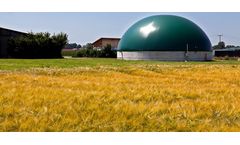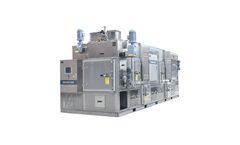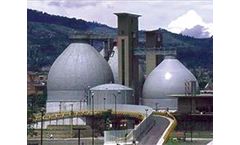Anaerobic Digester Operator Articles & Analysis
19 articles found
Legislation has potential to boost biogas use across the US When anaerobic digestion is used to process wastewater with a high organic load, it produces energy in the form of biogas, a combination of methane, carbon dioxide, and other gases. In the United States, there is huge potential for expansion in anaerobic digestion, but even though the energy produced can more than pay for the treatment, ...
Anaerobic digestion can turn waste into a valuable resource Billions of tons of organic waste are generated every day by households, industries, and municipalities. It’s discarded into landfills or discharged as effluent, or both, at a huge cost to the environment. But what if that waste could be turned into energy? The good news is that it can, through anaerobic digestion. In anaerobic ...
“We know that local residents still have questions, and we encourage them to attend tonight’s public hearing or send us questions at bioenergyic.com, including in Spanish and Haitian Creole.” Anaerobic digestion is a natural process that operates much like a cow’s stomach; the technology used for commercial ...
Aerobic processes (such as the activated sludge process) tend to produce more sludge compared with anaerobic processes. On the other hand, in extensive (natural) treatment processes, such as ponds and constructed wetlands, the produced sludge remains accumulated in the treatment units (liquid line) and is only removed after several years of operation. ...
Feedstocks can include manure, sewage biosolids, and food wastes. Among anaerobic digestion’s advantages is its ability to treat high-load streams while producing valuable products, including energy. Anaerobic digestion can produce significantly more energy than required to operate the process. But how much ...
Location: Empresas Publicas, Columbia Background: Ecological Laboratories Inc. was contacted by Empresas Publicas to determine if bioaugmentation with MICROBE-LIFT® technology could assist in the operation of their anaerobic digesters. The facility consisted of two anaerobic digesters of 7,900 m3 each. ...
Operators of anaerobic digestion (AD) plants know how important it is to optimise energy use across all stages of the process. ...
Adding waste-to-energy technology to wastewater treatment produces energy that can be used to power operations Anaerobic digestion (AD) is a biological process that uses microbes to biodegrade organic matter (feedstock) in the absence of oxygen. ...
Co-digestion of surplus yeast with brewery wastewater is a potentially economical method for recovering energy, in the form of biogas, from this difficult to dispose of by-product. In this work a modified version of the ADM1 (Anaerobic Digestion Model No. 1) was calibrated for an anaerobic digester fed with ...
” Larger wastewater treatment operations anaerobically digest thickened sludge, using bacteria to break it down and reduce volume, volatile solids, and pathogens. That sludge digestion process is what creates biogas, which can be harnessed for other uses. ...
Doosan actively invests in its waste and renewable energy related research and development activities to create and launch needs-driven technologies that will introduce innovative solutions to the worldwide waste and renewable energy sector. With over 400 UK anaerobic digestion plants in operation, and a similar number in the Planning process, ...
This paper examines the importance of influent fractionation, kinetic, stoichiometric and mass transfer parameter uncertainties when modeling biogas production in wastewater treatment plants. The anaerobic digestion model no. 1 implemented in the plant-wide context provided by the benchmark simulation model no. 2 is used to quantify the generation of CH4, H2 ...
The feasibility and performance of food waste and sewage sludge co-digestion were investigated to gain insight into their resource utilization. In this study, two-phase anaerobic digestion (TPAD) was operated under a total solids mixing ratio of 1:1 and different sludge retention times (SRTs). ...
The Town of Creston, British Columbia, Canada, operates an anaerobic digester to treat brewery wastewater. Biogas is used to fuel a boiler for process heating. The system was approaching 20 years old and the cover, originally built by GTI, required replacement. The anaerobic digester had to remain in service ...
A Pro Forma Model objective can be constructed for strategic planning of an anaerobic digestion facility. Anaerobic digestion (AD) of food wastes in the U.S. is a developing market that is poised for continued growth in many regions. ...
The feasibility of treating the supernatant of a municipal sludge digester supplemented with co-substrates by means of an anammox-based process (ELAN®) was tested in Guillarei (NW of Spain). Ammonia concentration measured in the supernatant of the sludge digester varied in the range 800–1,500 g N/m3 due to the fact that the sludge produced in the ...
The anaerobic digestion (AD) industry is growing rapidly. In the UK there are over 215 anaerobic digesters in operation and more than 100 in planning. ...
The anaerobic digestion process is globally applied to the treatment of highly concentrated wastes such as industrial and rural effluents, and sewage sludge. ...
The microbial processes involved in two-phase anaerobic digestion were investigated by operating a laboratory-scale acid-phase (AP) reactor and analyzing two full-scale, two-phase anaerobic digesters operated under mesophilic (35 °C) conditions. ...













